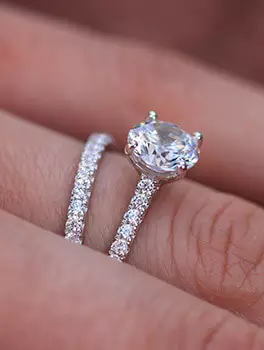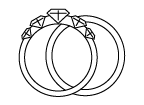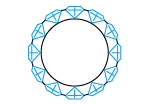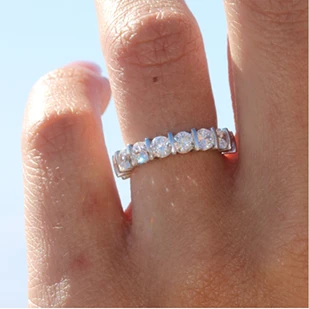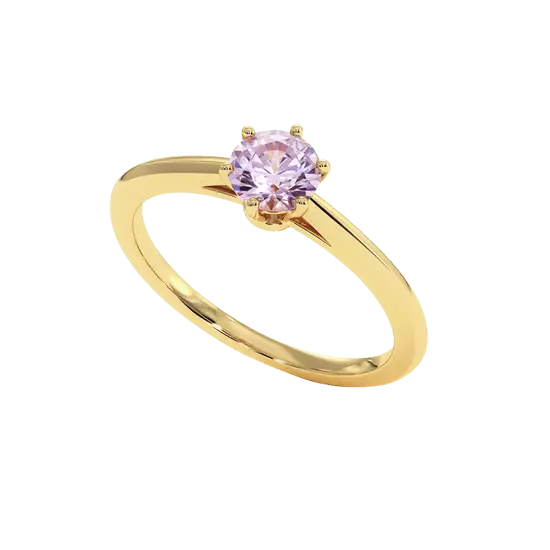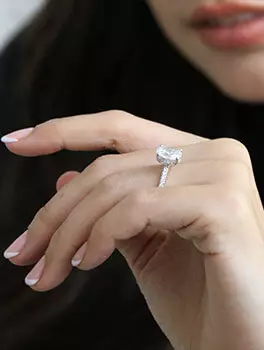WHICH PRECIOUS STONES LOOK LIKE DIAMONDS?
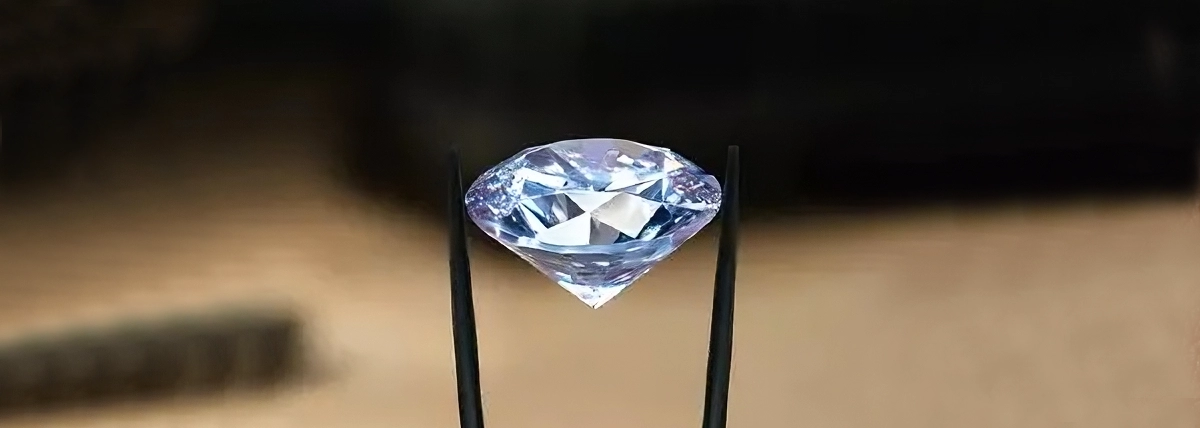
We all know that high-quality diamonds are very expensive, but what if you don't want to spend that much money on a diamond?
Are there stones that look like diamonds, but are more affordable in price?
There are a large number of gemstones that resemble diamonds in appearance, and some even come close in terms of physical properties. Some of these stones are natural, while others are synthetically created.
Let's take a look at the gemstones most commonly used as diamond substitutes:
White Sapphire
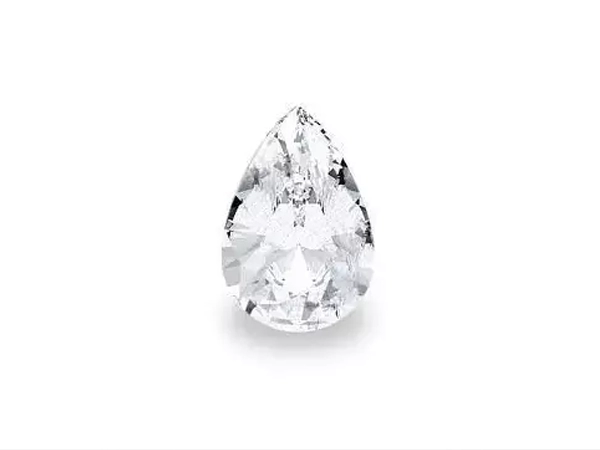
The white variety of sapphire is used as a diamond imitation not only because of the diamond-like appearance of this gemstone, but also because of its high durability.
Rated 9 on the Mohs hardness scale, the sapphire is harder than most other stones used as fake diamonds, including the popular cubic zirconia.
However, the white sapphire is less durable than the diamond, which has a hardness degree of 10 on the Mohs scale.
White Topaz
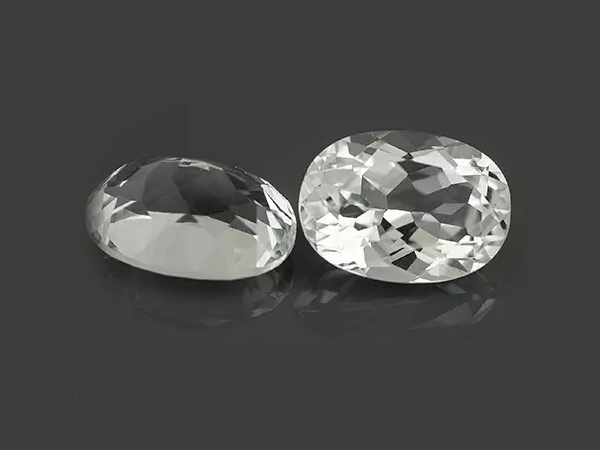
White topaz is a colorless variety of the mineral topaz. Compared to diamond, this material is not very durable (8 on the Mohs scale). That's why, even though elle looks like a real diamond, white topaz scratches much more easily.
Moissanite

Moissanite is a form of silicon carbide that is typically produced synthetically. Due to its hardness (9.5 on the Mohs scale), it may be the diamond imitation material that comes closest to the real diamond in terms of durability.
Although elle looks a lot like a real diamond, moissanite has different physical properties that result in optical differences.
For example, moissanite is brighter than diamond and sparkles in more colors when light penetrates it.
Cubic Zirconia
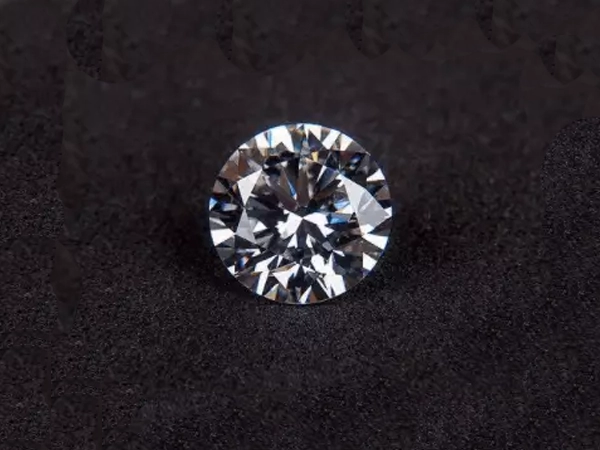
Cubic zirconia is a form of zirconium dioxide that is synthetically created.
It's one of the most popular diamond substitutes, not only because it has optical properties similar to a real diamond, but also because it is very cheap.
However, cubic zirconia is significantly less durable (8.5 on the Mohs scale), and that's why it easily accumulates scratches over time when worn. This stone is also much heavier than a diamond.
Garnet

Some synthetic varieties of garnet are colorless and can be used as diamond imitations.
However, garnet is less hard than diamond - the hardness of synthetic garnet varies from 7.5 to 8.5 on the Mohs scale.
Spinel

A natural mineral, spinel is a stone whose white variety is sometimes used as a diamond imitation.
Like many other substitutes, spinel is less hard (about 8.0 on the Mohs scale) than a real diamond.
Rutile
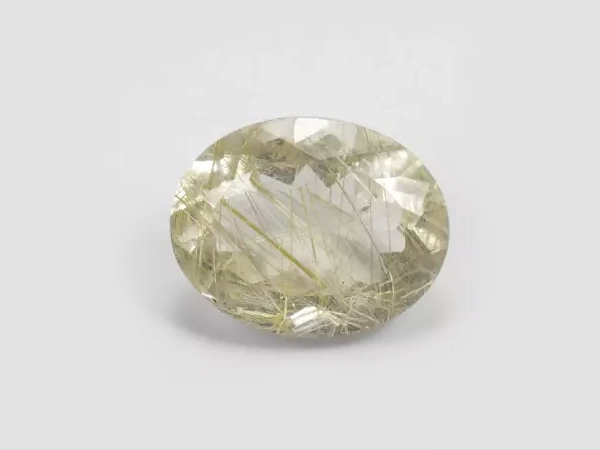
Rutile is a mineral found in nature. Its synthetic variety, which is created colorless, is sometimes used to imitate diamond.
However, rutile has a much lower hardness than real diamond - the Mohs index of rutile is 6.0-6.5.








NEWSLETTER
Sign up to receive the latest news regarding
the products and services CELINNI, and much more.
This website uses its own and third-party cookies to improve our services and show you advertising related to your preferences by analyzing your browsing habits. To give your consent to its use, press the Accept button.
Cookie preferences
| Cookie | Provider | Purpose | Expiry |
|---|---|---|---|
| PHP_SESSID | www.celinni.com | The PHPSESSID cookie is native to PHP and allows websites to store serialised status data. On the website it is used to establish a user session and to pass state data through a temporary cookie, which is commonly known as a session cookie. These Cookies will only remain on your computer until you close your browser. | Session |
| PrestaShop-# | www.celinni.com | This is a cookie used by Prestashop to store information and keep the user's session open. It stores information such as currency, language, customer ID, among other data necessary for the proper functioning of the shop. | 480 hours |






















